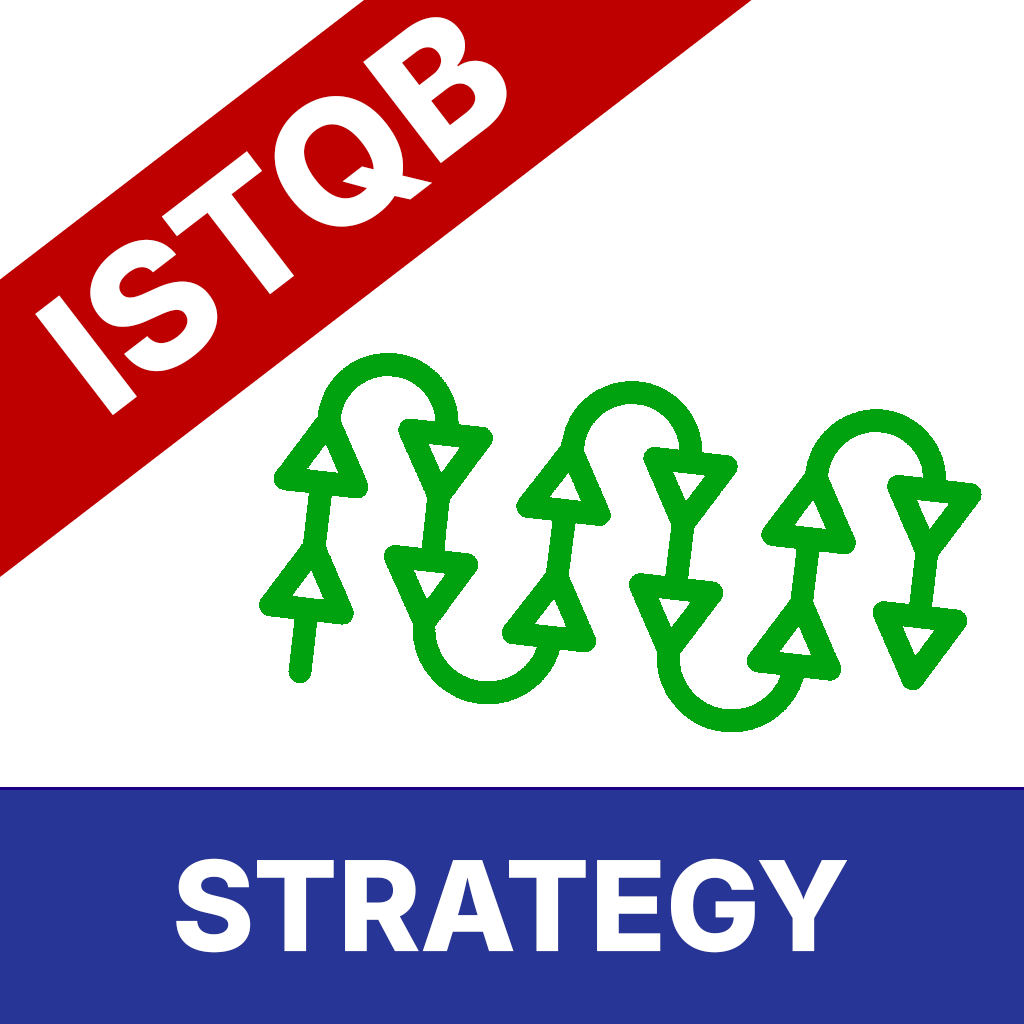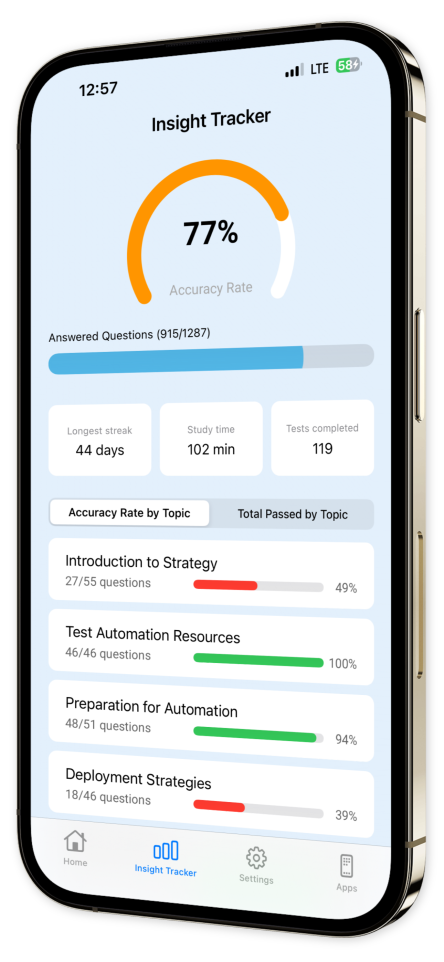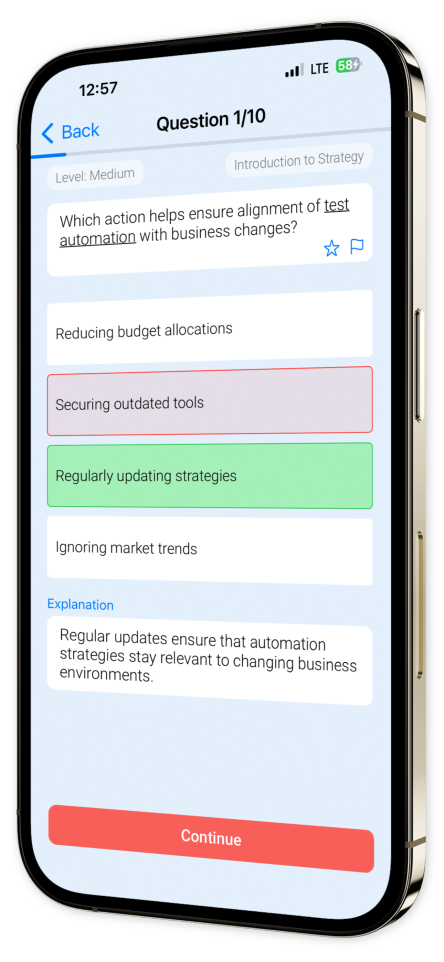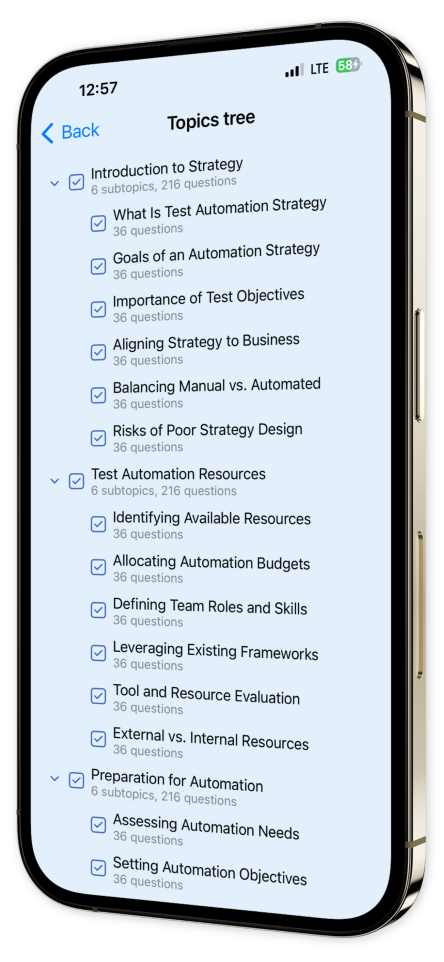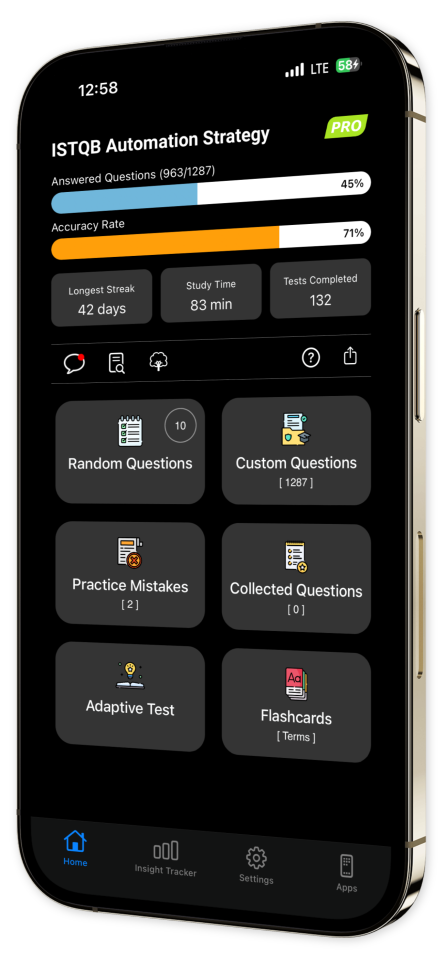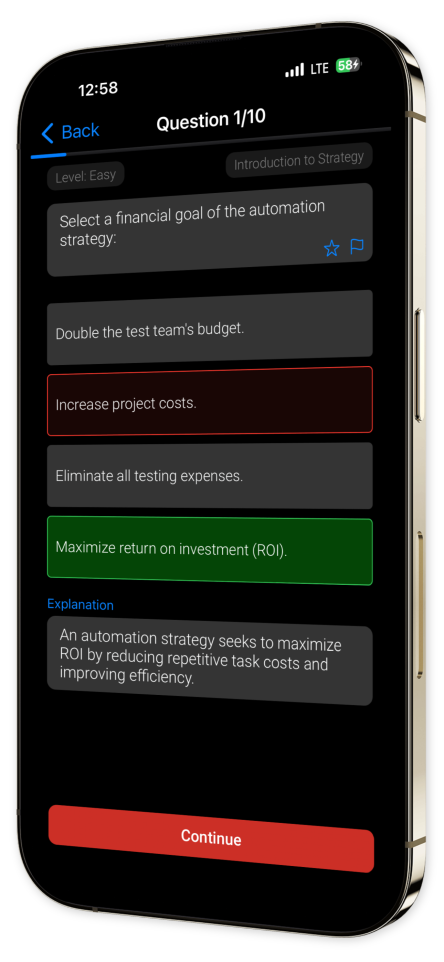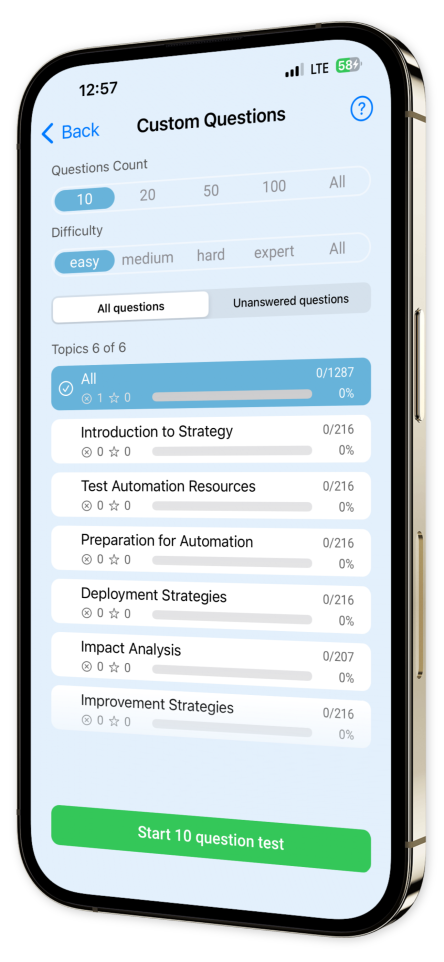
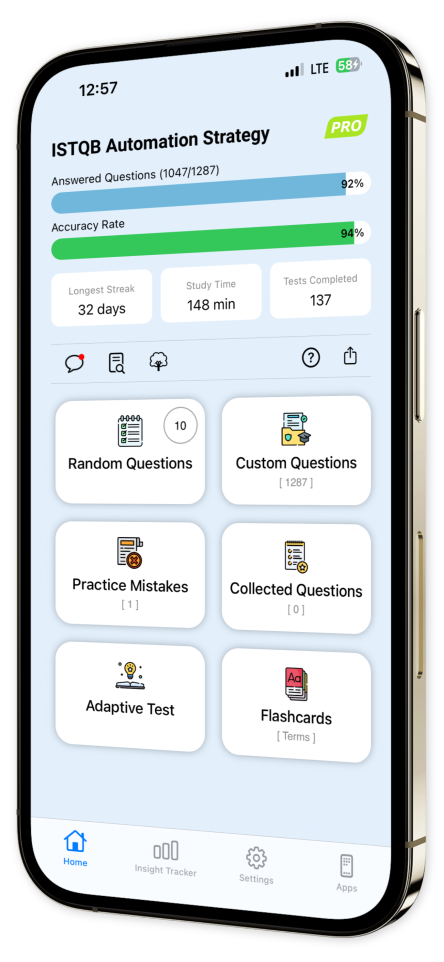
ISTQB Automation Strategy iOS
Transform your ISTQB Automation certification preparation with ISTQB Automation Strategy!
Our app immerses you in a robust testing environment, designed to enhance your expertise in automation processes.
Experience an extensive repository of practice questions that navigate every crucial facet required for the ISTQB Automation certification.
Dive deeper with each query, equipped with comprehensive explanations to solidify your understanding and sharpen your strategic skills.
Key Features:
Extensive Question Bank: Delve into a vast selection of questions spanning essential topics to guarantee a thorough preparation.
In-Depth Explanations: Benefit from detailed rationales for every question, enhancing your learning experience and knowledge retention.
Customizable Quizzes: Create tailored quizzes by choosing specific topics and question types, allowing focused study sessions where you need them most.
Progress Tracking: Monitor your growth over time with our intuitive tracking features, helping you identify strengths and areas for improvement.
Offline Access: Learn anytime, anywhere, even without an internet connection, making it ideal for on-the-go studying.
User-Friendly Interface: Enjoy a streamlined, intuitive design that enables you to concentrate on mastering your automation strategy skills.
Download ISTQB Automation Strategy today and embark on a smarter path to achieving your ISTQB Automation certification!
Prepare efficiently, study smartly, and excel confidently as you pave your way to certification success.
Content Overview
Explore a variety of topics covered in the app.
Example questions
Let's look at some sample questions
How does a risk-based approach enhance a test automation strategy?
Prioritizes all tests equallyReduces focus on critical areasFocuses on high-risk areasAutomates only regression tests
A risk-based approach focuses on high-risk areas, ensuring that testing efforts target the most critical components, thus optimizing resource usage and enhancing system reliability.
Why is stakeholder involvement crucial in aligning an automation strategy with business goals?
Ensures compliance with emerging technologiesHelps gather diverse insights and secure buy-inReduces need for communicationLimits strategy scope
Stakeholder involvement promotes diverse insights, securing buy-in and ensuring the strategy aligns closely with business objectives.
Which type of testing is typically less time-intensive over the long term?
Automated testingManual testingAd-hoc testingExploratory testing
Automated tests, once set up, can run quickly on multiple iterations without constant human intervention, saving time.
What is a common risk of inadequate test automation strategy in dynamic systems?
Increased test coverageHigher maintenance costsImproved test execution speedReduced defect detection rate
Inadequate strategy can lead to higher maintenance costs due to frequent changes in dynamic systems, requiring constant updates to the automation scripts.
Which challenge might arise from leveraging an existing framework?
Vendor lock-in riskLack of existing pluginsCustomizability restrictionsScalability issues
Existing frameworks may have limited options for customization.
Why is scalability important in test automation tools?
To run in multiple locationsTo handle large user volumesTo support new featuresTo integrate with CI/CD
Scalability ensures the tool can handle increasing volumes of data and users without performance loss.
Why might a company choose a gradual rollout despite its potentially longer deployment period?
To save costs on marketingTo ease infrastructure loadTo reach the market fasterTo avoid competition
A gradual rollout can help manage infrastructure load by spreading out usage and gradually integrating new traffic.
Which feature in automated reporting aids in detecting unexpected outcomes?
Historical trendsIncreased executionReduced test casesManual reviews
Historical trends provide insights into expected outcomes versus actual results.
Which is a sign that an automation strategy needs updating?
Increased test coverageFrequent test failuresTeam promotionsReduced test suite size
Frequent test failures may indicate the automation strategy is outdated or ineffective.
What aspect should be prioritized when updating automation strategies?
Checker toolsTest scripts verbosityIntegration capabilitiesTeam size
Integration capabilities ensure test suites work well with other systems and tools.
